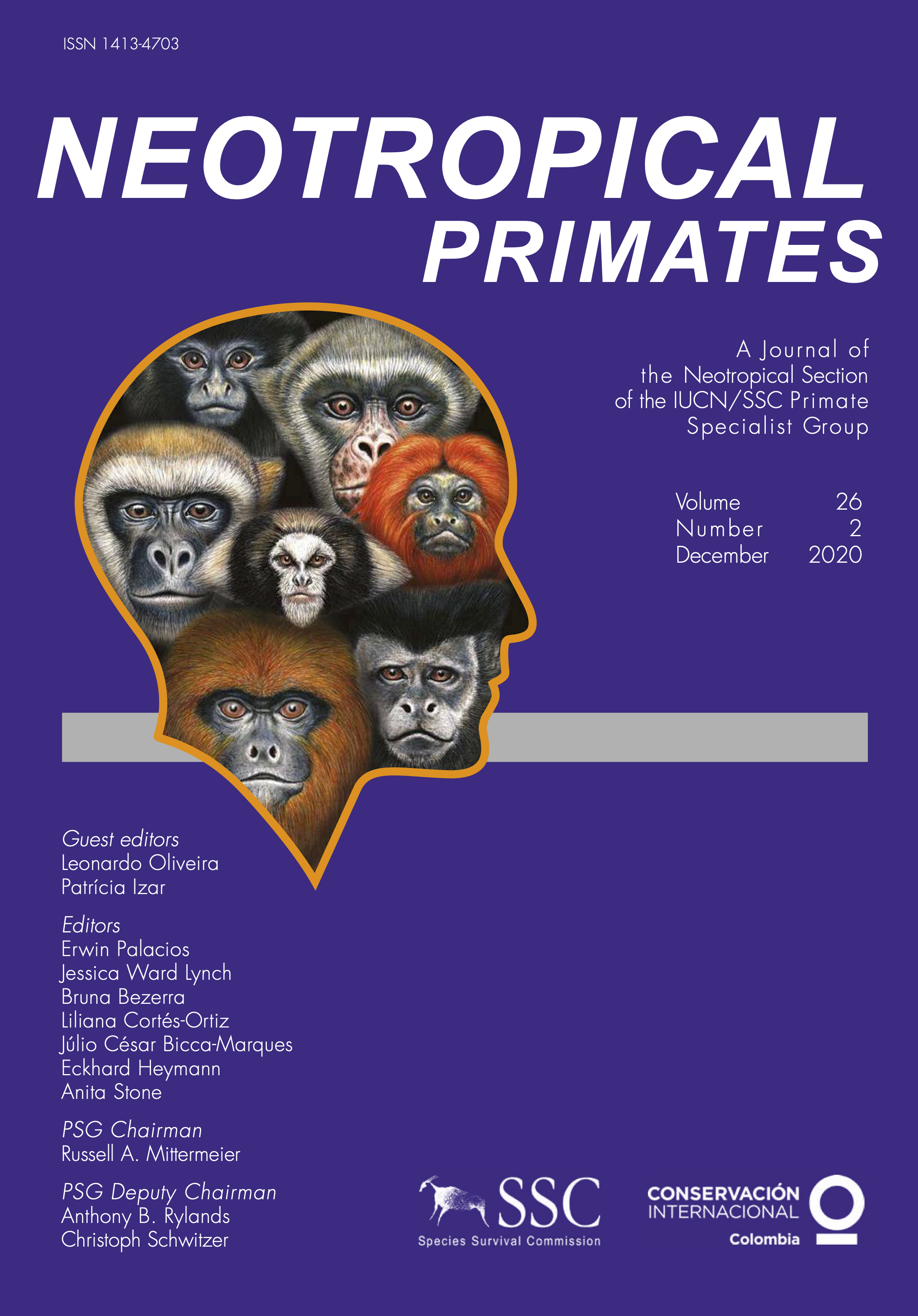Dieta e área de vida de saguis urbanos no parque linear do Ribeirão das Pedras (Campinas-SP, Brasil)
DOI:
https://doi.org/10.62015/np.2020.v26.57Keywords:
Invasive marmosets, Callithrix jacchus, Callithrix penicillataAbstract
Our aim was to characterize home range, group composition and diet of marmosets in a gallery forest of 20.97 ha, within an urban area, in the Parque Linear do Ribeirão das Pedras (Barão Geraldo, Campinas-SP) in southeastern Brazil. Five groups were followed between January 2018 and June 2019, with a total of 15 marmosets, comprised of hybrids and morphotypes of Callithrix jacchus and C. penicillata. The home ranges of these marmosets, varying from 0.2 to 14.4 ha, were distributed along the forest strip. The marmoset’s diet presents innovations, compared to the diet of marmosets in their original geographical distribution. The most consumed food resources were gum and banana. The exotic gum tree, Terminalia catappa, was a key species in the diet of these marmosets in the dry season. Despite the challenges of the urban environment, the marmosets find food, reproduce and are establishing themselves in this region, and will likely increase their population in the near future. We suggest monitoring these marmoset populations and developing measures of environmental education. Additional studies may be important for better understanding of the dynamics the marmosets in urban areas

Downloads
Published
Issue
Section
License

This work is licensed under a Creative Commons Attribution-NonCommercial-ShareAlike 4.0 International License.


